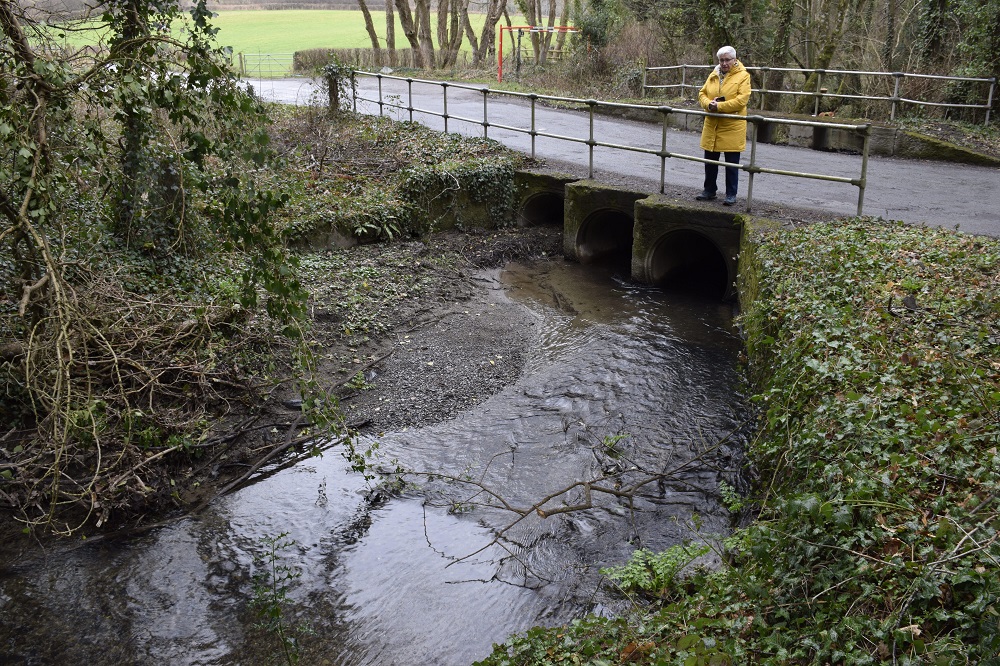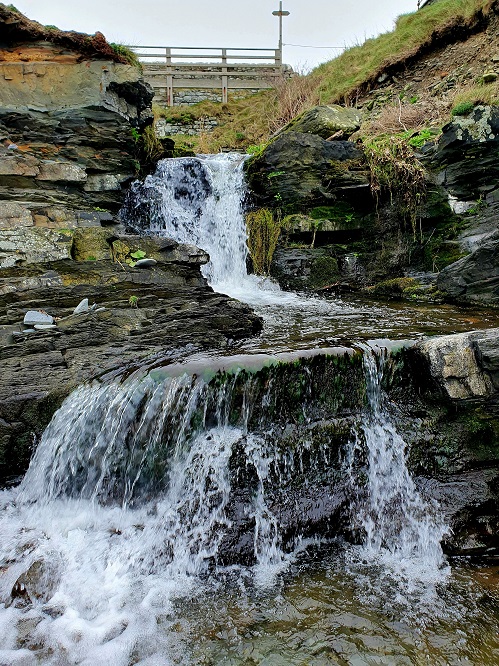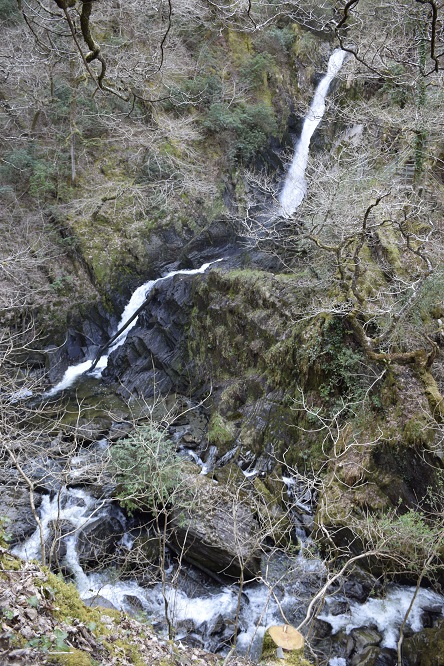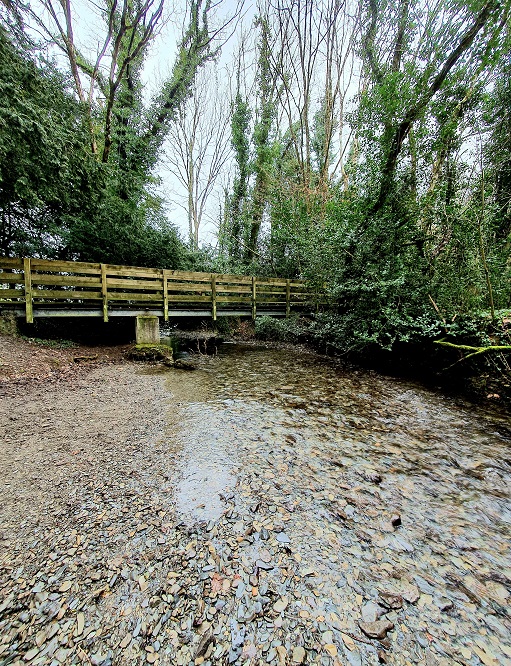Infinite beauty, Infinite destruction, Infinite consequences: rivers and mining around Aberystwyth

“In the very heart of the ancient hills themselves, the rushing brooks run foul with mineral waste and treatment oils and acids, and their flow is choked with heaps of stones and rubble.”
Dr. Kathleen Carpenter (1928), from Life in Inland Waters, the first British freshwater textbook.
Catherine Duigan
The rivers were dead and dying around Aberystwyth at the turn of the 20th century. In the Ystwyth valley, the metal mine dust washed into the rivers brought desperate destruction.
Like hill-fort inhabitants, farmers fortified their riverside fields with ramparts to prevent the entry of the poisonous milky water during a flood. In summer, the dust blew everywhere; a fine, slate-grey, evil powder covered the green meadows. Cattle and horses died.
On the riverbank, the tapestry of wildflowers wilted, and the roots shrivelled underground – nothing held the land fabric together. It unravelled in a deluge, washed away, leaving only a skeleton of bare grey shingle.
Tenant farmer Lewis Williams cut open the stomach of his poisoned cow and found it full of sand. The local landlord said “Perish the land, let us have the dollars.”
As with all things in Wales, there is no shortage of history, and the greed of metal mining was already carved into the archaeology of the countryside.
At Dolaucothi, a short distance south-east of Aberystwyth, Bronze Age miners, shivering, wet and miserable, retrieved precious gold nuggets, sieved from the rough gravels of the Afon Cothi.
Violent waves
Under the governance of Sextus Julius Frontinus, the Romans built a complicated web of aqueducts, which pulsated across the landscape to create large reservoirs above the river gorge.
These ominous and brooding masses of water were released suddenly to create violent waves, which scoured away the thin soil to reveal bedrock bones and gold carrying veins.
The power of water was also used to crush and wash the crusty and colourful lumps of ore, with all the grey poisoned water, toxic sediment, and wasted soil disappearing into the river.
The soft, orange gold became snake bracelets coiled around wealthy powerful wrists, with labour rewarded by the heads of emperors on thumb-worn coins.
By the time of the Industrial Revolution the enormous mineral wealth of Wales had generated family fortunes for some, but it had also become a very visible, heart-breaking environmental disaster.

As a young freshwater ecologist, arriving at the University College of Wales at Aberystwyth, Kathleen Carpenter would have mourned the loss of “the great water beetle, diving in his silvery coat of air-entangled mail”; “caddis-worms that trail their cylinders of leaf mosaic”; and, the shy trout, “head turned upstream, beneath the hollow bank”.
These were the passionate, poetic words she used in the introduction to her freshwater textbook.
It became Kathleen’s mission to describe the “infinite beauty, infinite variety, infinite charm” of freshwater life; to understand the destructive impact of metal mining, but always to use science as part of environmental management.
Extraordinary social change followed the terror of World War I and the fear of the Spanish Flu. Scientific fieldwork brought a new level of personal freedom for a woman scientist.
Sleeves were rolled up and corsets were abandoned. Hemlines were most problematic for a freshwater ecologist; too short would have been scandalous; too long would risk drowning.
To describe healthy and polluted rivers, Kathleen needed to clamber into the riverbed to collect water plants and the diverse range of aquatic animals – snails, springtails, beetles and lobster-like crayfish.

Looking for elusive caddisflies, mayflies and stoneflies, she searched under stones and scraped plant roots. Kathleen would have turned heads, and quite possibly attracted audiences of curious mine workers across mid-Wales.
Imagine, this athletic young woman, wearing sturdy boots, and with a hat firmly pinned to her elaborate Edwardian coils of dark hair. Was her skirt hitched up or hemline roughly altered the night before, or maybe she had the audacity to wear trousers?
A senior Professor thought that gritty particles of lead ore carried in the water injured the delicate pink gills of fish leading to their death.
In response Kathleen Carpenter placed hardy little silvery-brown minnows in a shallow depth of water in glass tanks, with a bottom layer of mineral grit – their movements muddied the water but they survived.

With the kind help of fishermen, she pinned cages with live fish to the Rheidol riverbed.
The amount of dissolved lead in the river water was measured – and Kathleen waited patiently for heavy rain.
Dissolved levels of lead shot up and the fish died in the river during the next flood.
Filtered flood water was added to the glass tanks in the lab and the fish died within hours.
Kathleen described how the pernicious invisible solution of lead in the water caused a layer of translucent slime to develop on the lustrous bodies of the fish. It formed a thick glass-like coat on their gills – the fish suffocated.
As she had also found rich communities of animals in the presence of mineral grit in the rivers, it was now clear that a chemical solution was needed to end this infinite destruction.

The summer of 2012 was one of the wettest on record in Wales and again flood waters carved into the old mine sediments around Aberystwyth, while the University scientists recorded the consequences.
Despite intense washing, ruby red Rhubarb grown with care on a local allotment was contaminated with lead, zinc, cadmium and copper.
A farmer’s nightmare returned as cattle died after being unknowingly fed metal contaminated silage harvested from a field which had been flooded.
Extreme weather events, like floods, are associated with climate change and will happen more frequently in future, bringing infinite consequences for the health of Welsh society and its rivers.
This article marks the 100th anniversary of the submission of Kathleen Carpenter’s M.Sc thesis entitled “The Freshwater Fauna of the Aberystwyth District of Cardiganshire, studied in relation to lead-pollution” on 25 April 1923, University College of Wales, Aberystwyth.
Support our Nation today
For the price of a cup of coffee a month you can help us create an independent, not-for-profit, national news service for the people of Wales, by the people of Wales.







I don’t expect it did the miners much good either, my ancestors among them!
Living among the metal mines of the Dolgellau Gold, Copper and Manganese belt I found this very interesting…
Back in 1938 a tailings dam burst at Glasdir Copper Mine, Ganllwyd and the Mawddach was poisoned as far as Llanelltyd, so I learnt just the other day…
I was lucky some years ago to listen to both G. W. Hall and G. Williams, who’s family was associated with the mine for 5 generations, give separate talks on the old days of Clogau Gold…